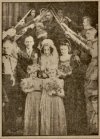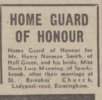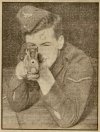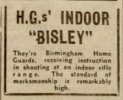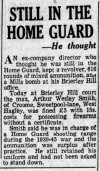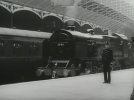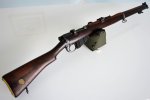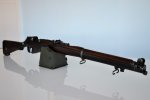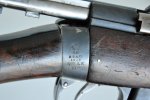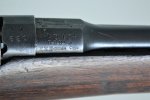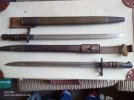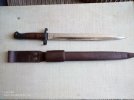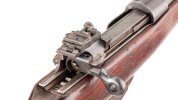-
Welcome to this forum . We are a worldwide group with a common interest in Birmingham and its history. While here, please follow a few simple rules. We ask that you respect other members, thank those who have helped you and please keep your contributions on-topic with the thread.
We do hope you enjoy your visit. BHF Admin Team
You are using an out of date browser. It may not display this or other websites correctly.
You should upgrade or use an alternative browser.
You should upgrade or use an alternative browser.
Home Guard
- Thread starter rocketron
- Start date
Hes firing a SMLE note bayonet boss if indoor it be 22
ChrisM
Gone but not forgotten R.I.P
Jaffa, thanks for your kind words. One or two points arising from your various comments.Great knowledge... Thanks for taking the time to share it here.
I think my father was living in Erdington during the war, so would that have come under Birmingham or Sutton I wonder?
He never said much, that generation never did, but I do remember him saying something about A.A. (either guns, rockets or both) being on the roof of Lewis's department store... There was some irony about most people taking shelter underground during an air raid whilst the Home Guard were going onto the roof of the tallest building in the city!... I've never heard any other accounts of A.A. on the roof of Lewis's, maybe it was a big secret?... I really don't know.
I'll have to dig out his notebook.... Due to wartime restrictions, army instruction books were in short supply and volunteers had to copy the instructions and drawings in their own hand.... There may well be more info in his notebook.
Unless he entered Home Guard service directly into anti-aircraft duties, your father would very probably have served initially in 23rd Warwickshire (Birmingham) Battalion Home Guard whose territory was Erdington. I have various bits of information online in the staffshomeguard website about this unit and a few of its members.
Rooftops would have been appropriate places to locate light anti-aircraft weaponry and it doesn't surprise me to learn this was the case for Lewis's. Local defence of this type was prevalent. Only useful in the event of low-level, daylight raids. This was the arrangement adopted by a platoon of the Streetly Home Guard in order to protect the local area (which definitely included the Hardwick Arms pub!) although I think that this was even more DIY than many of the others. (See winter 1940/41 images below).
The serious anti-aircraft work was obviously performed by various batteries of heavier a-a weaponry, such as the one your father subsequently served on. The firepower of such units was huge and the impact on local communities when they were operated must have been immense.
Whilst printed training material must indeed have been in short supply I'm not so sure that the need to write everything down in personal notebooks during training was really such a bad idea. It may well have made some facts stick in the mind more effectively than if they had been received in some post-lecture handout. Seems to have been the norm for military training at that time – I have seen something very similar in the early training of a Royal Flying Corps pilot.
Hadn't heard previously of the existence of the Home Guard Grenade Training School. Does anyone have any idea where it was located? With that central telephone number I strongly suspect that there weren't too many live firing exercises on the premises!
You have some really interesting stuff which many Home Guard historians would almost certainly like to see. Congratulations on preserving it and thanks for letting us know about it. I'd be happy to make suggestions if you feel you want to share it more widely, in memory of your father and his service.
Chris
(Images source: Kate Cutler)
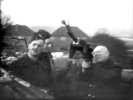
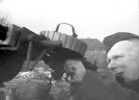
Even in the 70s while working for BHD I was still coming across small arms ammunition in airing cupboards of all places always being told the same story it was my Dads or my Brothers from when in the Home guard.April 1950, not Birmingham but Brierley Hill, however were there others who kept ammunition ?
(Evening Despatch)
View attachment 192834
They Don t Like It Up Em
Found this back of old water tank in Kettlehouse Rd Kingstanding while working for BHD in the 70s women said it was her Dads from the HG i got his BDS as well but i had to bin them because of moth i do not recall the unit
but it is stamped for A Coy Rack/Weapon No 92
made by Remmington 1916
Found this back of old water tank in Kettlehouse Rd Kingstanding while working for BHD in the 70s women said it was her Dads from the HG i got his BDS as well but i had to bin them because of moth i do not recall the unit
but it is stamped for A Coy Rack/Weapon No 92
made by Remmington 1916
Last edited:
ChrisM
Gone but not forgotten R.I.P
3rd DECEMBER 1944...... was of course a rather special date in the mind of those of us who are interested in the Home Guard (even if nobody else!) And it was 80 years ago yesterday.
I have just paid my little tribute to the blokes local to where I grew up in Streetly. If you want to glance at it, it's here: http://www.staffshomeguard.co.uk/L8A6StreetlyMemories4Dec1944.htm
(Safe to click on even if Google tries to tell you otherwise).
Chris

I have just paid my little tribute to the blokes local to where I grew up in Streetly. If you want to glance at it, it's here: http://www.staffshomeguard.co.uk/L8A6StreetlyMemories4Dec1944.htm
(Safe to click on even if Google tries to tell you otherwise).
Chris

paul stacey
master brummie
Great body of men. !!
Time Traveller 66
master brummie
Totally agree everyone of them played their part.3rd DECEMBER 1944...... was of course a rather special date in the mind of those of us who are interested in the Home Guard (even if nobody else!) And it was 80 years ago yesterday.
I have just paid my little tribute to the blokes local to where I grew up in Streetly. If you want to glance at it, it's here: http://www.staffshomeguard.co.uk/L8A6StreetlyMemories4Dec1944.htm
(Safe to click on even if Google tries to tell you otherwise).
Chris
View attachment 197256
mw0njm.
A Brummie Dude
A Dummy SMLE Mk111 Rifle produced for drill purposes and constructed in wood with alloy fittings.
These practice rifles were issued for training by the British in both World Wars, I believe however this example to be of WW1 vintage due to the presence of the magazine cut off detail in the moulded alloy metalwork, a feature that was discontinued on the real SMLE’s in 1915.
Although manufactured in WW1, when they were used by the Volunteer Training Corps (a WW1 equivalent of the Home Guard) I have no doubt it went on to be used again in WW2 by the Home Guard.
Made to look like the real thing the metal work is cast in one block with the exception of the muzzle cap, which is from a real SMLE, and the swivel sling mounts. These features allowed them to be used for both drill and bayonet practice.
An interesting feature of this particular piece is the rather crude addition of a moving bolt which appears to be fashioned from a door drop bolt, so typical of Home Guard improvisation and allowing for basic weapons training.
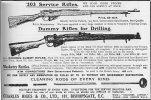
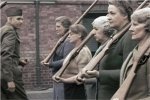
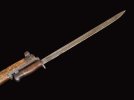

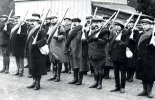
These practice rifles were issued for training by the British in both World Wars, I believe however this example to be of WW1 vintage due to the presence of the magazine cut off detail in the moulded alloy metalwork, a feature that was discontinued on the real SMLE’s in 1915.
Although manufactured in WW1, when they were used by the Volunteer Training Corps (a WW1 equivalent of the Home Guard) I have no doubt it went on to be used again in WW2 by the Home Guard.
Made to look like the real thing the metal work is cast in one block with the exception of the muzzle cap, which is from a real SMLE, and the swivel sling mounts. These features allowed them to be used for both drill and bayonet practice.
An interesting feature of this particular piece is the rather crude addition of a moving bolt which appears to be fashioned from a door drop bolt, so typical of Home Guard improvisation and allowing for basic weapons training.





Richard Dye
master brummie
Interesting, the rifle was re calibrated from 303 to 22lr for training yet the size and feel replicate the real world. Also the cost of 22 ammo was significantly less and I’m sure more available. Thanks for sharing!Here is a .22 LR training rifle that started out its life at BSA in 1916 as an SMLE Mk III* .303 service rifle
View attachment 204069
View attachment 204063
View attachment 204065
View attachment 204067
mw0njm.
A Brummie Dude
the price of 22lr now is ridiculous at least you can reload 303 ammoInteresting, the rifle was re calibrated from 303 to 22lr for training yet the size and feel replicate the real world. Also the cost of 22 ammo was significantly less and I’m sure more available. Thanks for sharing!
Richard Dye
master brummie
22lr prices in the US is like dirt! 303 is not bad but 3000 rounds of 22lr is about $40/$50.the price of 22lr now is ridiculous at least you can reload 303 ammo
mw0njm.
A Brummie Dude
p14 .303 and p17 30.06 British service rifle



The P17 was issued to the Home Guard in greater numbers than any other rifle. To avoid confusion between the P14 and P17, the P17 had a 2" widered band pained on it (normally on the foregrip) to signify that it used .30-06calibre ammunition. Quite often '300' was stenciled, in black or white, on thered band as well.To complicate matters further the P14 and P17 look almost identical and itis only upon closer inspection that you can tell the difference. The P14 andP17 both saw service with the Home Guard.Attachments
Richard Dye
master brummie
I wonder how reliable those guns were? The mechanisms look rugged but a little sloppy.p14 .303 and p17 30.06 British service rifle

The P17 was issued to the Home Guard in greater numbers than any other rifle. To avoid confusion between the P14 and P17, the P17 had a 2" widered band pained on it (normally on the foregrip) to signify that it used .30-06calibre ammunition. Quite often '300' was stenciled, in black or white, on thered band as well.To complicate matters further the P14 and P17 look almost identical and itis only upon closer inspection that you can tell the difference. The P14 andP17 both saw service with the Home Guard.
paul stacey
master brummie
I'm sure, that they still had these converted, MK 111 . 303 /.22, at the ACF range,Thorp Street Drill Hall, in the early 1960's!! They certainly had them at the Full Bore Club, Waterbeach Barracks, in the 1970's!!
yes the bolt was push and pullThe Ross proved to have a very poor tolerance of dirt and grit, the screw threads operating the bolt lugs would then jam the weapon open or closed in the heat of battle.
View attachment 204101
mw0njm.
A Brummie Dude
i had one that i used as a poker for the fire. there was a junk yard on nechells park rd top of cattles grove in the 50/60s that sold HG issue and ww2 items


British No. 4 Spike Bayonets
Pictures and descriptions of British No. 4 Spike Bayonets.
worldbayonets.com

